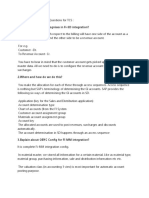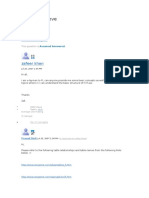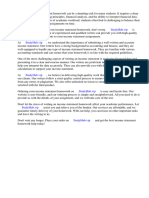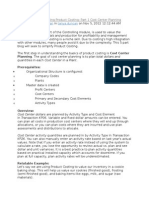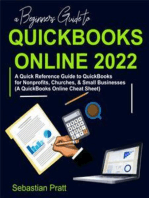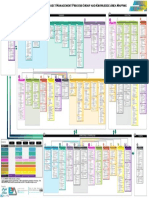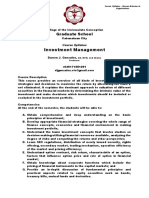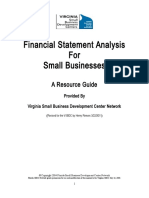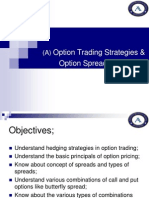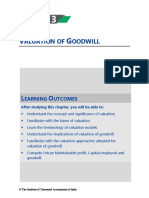How Data Values Are Derived in BPC
How Data Values Are Derived in BPC
Uploaded by
Akhlaque ShamsiCopyright:
Available Formats
How Data Values Are Derived in BPC
How Data Values Are Derived in BPC
Uploaded by
Akhlaque ShamsiCopyright
Available Formats
Share this document
Did you find this document useful?
Is this content inappropriate?
Copyright:
Available Formats
How Data Values Are Derived in BPC
How Data Values Are Derived in BPC
Uploaded by
Akhlaque ShamsiCopyright:
Available Formats
Getting Started Newsletters
Hi, Guest
Log On
Join Us
Search the Community
Products
Services & Support
About SCN
Downloads
Industries
Training & Education
Partnership
Developer Center
Lines of Business
University Alliances
Events & Webinars
Innovation
More documents in
Store
Activity
Communications
Actions
Browse
Enterprise Performance Management (SAP EPM)
Actions
How Data Values are Derived in BPC
Version 2
created by Leila Lappin on Jul 16, 2013 4:26 PM, last modified by Leila Lappin on Jul 17, 2013 5:09 PM
Login to follow, like, comment, share and
bookmark content.
Login
Register
In the following document, I am assuming that you are familiar with the Business Planning and Consolidation (BPC)
terminology: model, dimension, context as they apply to BPC 10 and application and current view as they apply to
BPC 7.5
In BPC, the data values are stored and displayed using three concepts, the account type, the storage type and the
report measure. These three factors are all covered in various documents, notes and online discussions. The
following document will explain what these concepts are and how they work together to render the results in BPC
reports. I will start by some short definitions.
Account Type (ACCTYPE property): In BPC, there are four standard account types: INC, EXP, AST, LEQ. INC
(Income), EXP (Expense) are profit and loss (P&L) accounts. AST (Asset) and LEQ (Liability and Equity) are balance
sheet accounts.
Storage type: BPC models (applications in BPC 7.5) can have two storage types, year to date (YTD) or Periodic. In a
YTD storage type model, all values are considered cumulative from the start of the fiscal year to the current time period
(usually month). In a periodic model, all values are considered applicable only to the current period.
Measures: BPC requires a dimension called Measures. The Measures dimension allows you to change the view of
your data between Periodic, Quarter-to-date (QTD), Year-to-date (YTD), or any custom view required by your business.
BPC account types affect the way your data is displayed in reports based on the storage type of your model and the
measure specified in the report context.
The values stored in AST and LEQ account are always YTD, irrespective of the storage type of your model. Putting it
another way, balance sheet accounts are point accounts. The values in these accounts always appear the same way
regardless of the measures selected in the report context.
The values stored in INC, EXP accounts are stored, depending on the storage type of the model. Subsequently, when
the values are retrieved they are subject to the measure value selected in the reports context.
In a YTD storage type model, P&L account type values (INC/EXP) are stored as aggregated values from the beginning
of the fiscal year to the current period. This means that they are different when they are viewed in a report with a
PERIODIC measure.
Lets take a simple example to demonstrate this.
P&L account, stored in YTD model, shown in a report with YTD, PERIODIC and QTD measures
Jan
Feb
Mar
Apr
May
Jun
Jul
Aug
Sep
YTD
100
250
300
250
450
500
400
PERIODIC
100
150
-250
300
-50
200
50
-100
-400
QTD
100
250
300
250
450
50
-50
-450
As the data above shows, the values for PERIODIC and QTD measure are adjusted to reflect the YTD aggregated
value. To demonstrate this we can look at the values for July, Aug, Sep
July:
YTD: 500 aggregated value (up to July)
PERIODIC: July - June = 50
QTD: July - June + 0 =50
August:
YTD: 400
PERIODIC: August - July = -100
QTD: August - July + QTD July = -50
September
YTD: 0
PERIODIC: September August = -400
QTD: September August + QTD August = -450
For more details and examples about BPC account types and their behavior please refer to the document at
http://scn.sap.com/docs/DOC-26973
2359 Views
Topics: enterprise_performance_management
Incoming Links
Re: Data not rolling up to Parent Level
Re: YTD shows wrong value
Average User Rating
(6 ratings)
6 Comments
Roberto Vidotti Jul 16, 2013 7:28 PM
Hi Leila,
thank you for this document, from now on I will recommend it to all those who regularly have doubts
on how BPC works with signs, periodic and YTD and what's acctype.
Kind regards
Roberto
Like (1)
Leila Lappin Jul 16, 2013 7:40 PM (in response to Roberto Vidotti)
Hi Vidotti,
You are very welcome. I think this issue becomes confusing even
for people who know BPC well. Hopefully brining it all together will
help.
Best Regards,
Leila Lappin
Like (2)
Karsten Wenzel Sep 3, 2013 3:22 PM
Hi Leila,
thank you for this very helpful document.
Best Regards,
Karsten
Like (1)
Parameshwar Sangangiri Sep 28, 2013 5:39 AM
Very helpful document!!!
Like (1)
Amit Kumar Feb 21, 2014 4:18 PM
Hi Leila,
very helpful document !
Thanks!
Amit
Like (0)
Theophile Nyumuyantu Jul 7, 2014 2:04 PM
Excellent article Leila!!!
Great work as usual!
Kind regards,
Theo
Like (0)
Site Index
Privacy
Contact Us
Terms of Use
SAP Help Portal
Legal Disclosure
Copyright
Follow SCN
You might also like
- KELOMPOK 7 Materi Bahasa Inggris Buku VernonDocument142 pagesKELOMPOK 7 Materi Bahasa Inggris Buku VernonmelvinNo ratings yet
- Miid Term - Exam BBA 038 Business - Analysis For - StudentsDocument6 pagesMiid Term - Exam BBA 038 Business - Analysis For - StudentsAmina IsayevaNo ratings yet
- Sap BPCDocument5 pagesSap BPCaviart1No ratings yet
- Growth Management Consultants: Finance ReportDocument4 pagesGrowth Management Consultants: Finance ReportNgọc Vân0% (1)
- Three Statement Financial ModelingDocument13 pagesThree Statement Financial ModelingJack Jacinto100% (1)
- Business Economics Notes For KTU StudentsDocument27 pagesBusiness Economics Notes For KTU StudentsAbdu Samad MNo ratings yet
- Bulacan Bamboo CraftDocument22 pagesBulacan Bamboo CraftCarlamae Carpio Mendiola60% (5)
- TCS Q&aDocument3 pagesTCS Q&amanojpuzzleNo ratings yet
- Results AnalysisDocument7 pagesResults AnalysisMarolop HutabaratNo ratings yet
- Business Intelligence ROI Calculator - PreviewDocument76 pagesBusiness Intelligence ROI Calculator - PreviewNaval Vaswani100% (1)
- Comparing TCO For BI SolutionsDocument13 pagesComparing TCO For BI SolutionsGempur SandRisNo ratings yet
- Oracle Financial AnalyticsDocument9 pagesOracle Financial AnalyticsRamesh KuppusamyNo ratings yet
- Customer Lifetime Value Customer Analytics With RDocument7 pagesCustomer Lifetime Value Customer Analytics With RSDGDF DFGDFNo ratings yet
- Learn Well Technocrafts - Business Requirement DocumentDocument7 pagesLearn Well Technocrafts - Business Requirement Documentpmurari23100% (2)
- Sap BPC BPFDocument7 pagesSap BPC BPFsekhardatta0% (2)
- Types Of ReportingDocument11 pagesTypes Of ReportingealimliNo ratings yet
- SAP FICO Resume FormatDocument4 pagesSAP FICO Resume Formatchaitu215No ratings yet
- The Math Behind SaaS Startup ValuationDocument4 pagesThe Math Behind SaaS Startup ValuationeliforuNo ratings yet
- Financial ModelingDocument8 pagesFinancial ModelingSakshi KatochNo ratings yet
- The Benefits of Data Modeling in Business Intelligence: December 2008Document11 pagesThe Benefits of Data Modeling in Business Intelligence: December 2008ranveer215No ratings yet
- SAP BPC Activity Flow - An Overview!: Corporate Performance IntelligenceDocument2 pagesSAP BPC Activity Flow - An Overview!: Corporate Performance Intelligenceshah04174No ratings yet
- Sntrep Spreadsheet DetailsDocument18 pagesSntrep Spreadsheet DetailsMa LeslynneNo ratings yet
- Sap Fi MM IntegrationDocument6 pagesSap Fi MM Integrationbhasker.241984No ratings yet
- KingwordDocument11 pagesKingword515 AnupamNo ratings yet
- FI Concepts: Way To ImproveDocument8 pagesFI Concepts: Way To ImproveSmith F. JohnNo ratings yet
- How to Calculate the Retention or Churn Rate - StrataScratchDocument1 pageHow to Calculate the Retention or Churn Rate - StrataScratchGirma GessesseNo ratings yet
- GL & AP EntriesDocument3 pagesGL & AP EntriesObilesu RekatlaNo ratings yet
- Literature Review On Revenue RecognitionDocument7 pagesLiterature Review On Revenue RecognitionaflshftafNo ratings yet
- What Is Oracle Demand PlanningDocument11 pagesWhat Is Oracle Demand Planningajay78_hiNo ratings yet
- Income Statement Homework HelpDocument8 pagesIncome Statement Homework Helpafnadyebqjzazl100% (1)
- Business-Intelligence Business Intelligence in ActionDocument4 pagesBusiness-Intelligence Business Intelligence in ActionSata JatimNo ratings yet
- PHD Thesis On Ratio AnalysisDocument5 pagesPHD Thesis On Ratio Analysisaflodnyqkefbbm100% (2)
- Using Results Analysis To Get The Most Out of The PS ModuleDocument21 pagesUsing Results Analysis To Get The Most Out of The PS Modulegokul198073% (11)
- What Is The Difference Between S&OP Vs IBPDocument10 pagesWhat Is The Difference Between S&OP Vs IBPTaha MahmoudNo ratings yet
- Short - The Ultimate FP&a BI Guide For BeginnerDocument43 pagesShort - The Ultimate FP&a BI Guide For BeginnerROHIT BAJAJNo ratings yet
- New GL Doc SplittingDocument56 pagesNew GL Doc SplittingSam Kol100% (2)
- BPP Business School Coursework Cover Sheet: COTS's Coffee ShopsDocument8 pagesBPP Business School Coursework Cover Sheet: COTS's Coffee ShopsRana UmarNo ratings yet
- Chart of Accounts - Design ConsiderationsDocument13 pagesChart of Accounts - Design ConsiderationsAnimorphsNo ratings yet
- SAP PS Questions and Answers 4Document9 pagesSAP PS Questions and Answers 4RaghavendraMurugan100% (1)
- Logic FI and SolnDocument17 pagesLogic FI and Solnkrishna dwivediNo ratings yet
- Term Paper Financial AnalysisDocument8 pagesTerm Paper Financial Analysisea9k5d7j100% (1)
- Product Costing, Part of The Controlling Module, Is Used To Value TheDocument9 pagesProduct Costing, Part of The Controlling Module, Is Used To Value TheSunil GNo ratings yet
- Cutover Activities - Legacy Data TransferDocument6 pagesCutover Activities - Legacy Data TransferMohammadGhouseNo ratings yet
- Report WritingDocument32 pagesReport WritingJalil Ahmad HalimNo ratings yet
- Data Envelopment Analysis Bachelor ThesisDocument5 pagesData Envelopment Analysis Bachelor Thesismeganfosteromaha100% (2)
- PowerBI_Banking_ProjectDocument14 pagesPowerBI_Banking_Projectali.vazeer2018No ratings yet
- Sub Ledger Accounting Deep DriveDocument13 pagesSub Ledger Accounting Deep DriveBrian HadizadehNo ratings yet
- Bookkeeping In Quickbooks Online (Bookkeeping & Accounting)From EverandBookkeeping In Quickbooks Online (Bookkeeping & Accounting)No ratings yet
- The Balanced Scorecard: Turn your data into a roadmap to successFrom EverandThe Balanced Scorecard: Turn your data into a roadmap to successRating: 3.5 out of 5 stars3.5/5 (4)
- Hands-On Financial Modeling with Excel for Microsoft 365: Build your own practical financial models for effective forecasting, valuation, trading, and growth analysisFrom EverandHands-On Financial Modeling with Excel for Microsoft 365: Build your own practical financial models for effective forecasting, valuation, trading, and growth analysisNo ratings yet
- Professional Microsoft SQL Server 2012 Reporting ServicesFrom EverandProfessional Microsoft SQL Server 2012 Reporting ServicesRating: 1 out of 5 stars1/5 (1)
- A Beginners Guide to QuickBooks Online 2022: A Quick Reference Guide to QuickBooks for Nonprofits, Churches, & Small Businesses (A QuickBooks Online Cheat Sheet)From EverandA Beginners Guide to QuickBooks Online 2022: A Quick Reference Guide to QuickBooks for Nonprofits, Churches, & Small Businesses (A QuickBooks Online Cheat Sheet)No ratings yet
- Cost to Serve Analytics: Strategise for success: A practical roadmap for customer service efficiencyFrom EverandCost to Serve Analytics: Strategise for success: A practical roadmap for customer service efficiencyNo ratings yet
- Mastering Operational Performance : The Ultimate KPI HandbookFrom EverandMastering Operational Performance : The Ultimate KPI HandbookNo ratings yet
- 10 Step Kpi System: A Time-proven Approach to Finding Tailor-made Kpis for the Most Challenging Business SituationsFrom Everand10 Step Kpi System: A Time-proven Approach to Finding Tailor-made Kpis for the Most Challenging Business SituationsNo ratings yet
- Benefits Realisation Management: The Benefit Manager's Desktop Step-by-Step GuideFrom EverandBenefits Realisation Management: The Benefit Manager's Desktop Step-by-Step GuideNo ratings yet
- COVID-19 General InformationDocument4 pagesCOVID-19 General InformationAkhlaque ShamsiNo ratings yet
- Exam18 ICSE Sample Paper English LiteratureDocument7 pagesExam18 ICSE Sample Paper English LiteratureAkhlaque ShamsiNo ratings yet
- Majed Abdeen - PMBOK Processes 6thDocument1 pageMajed Abdeen - PMBOK Processes 6thHassan Mody TotaNo ratings yet
- Annexure-A-6: (Part of Bid Document) Reply To Questions/Queries Received After Pre-Bid Meeting .Date 30.01.2019Document4 pagesAnnexure-A-6: (Part of Bid Document) Reply To Questions/Queries Received After Pre-Bid Meeting .Date 30.01.2019Akhlaque ShamsiNo ratings yet
- Learn PMP - Easy WayDocument45 pagesLearn PMP - Easy WayAkhlaque ShamsiNo ratings yet
- Pelco WCS Series Power SupplyDocument2 pagesPelco WCS Series Power SupplyAkhlaque ShamsiNo ratings yet
- Work Life Balance - PMI WBACVBHDocument5 pagesWork Life Balance - PMI WBACVBHAkhlaque ShamsiNo ratings yet
- Report DraftedDocument85 pagesReport DraftedAkhlaque ShamsiNo ratings yet
- Sap BPC OptimizedDocument7 pagesSap BPC OptimizedAkhlaque ShamsiNo ratings yet
- Support Troubleshooting InformationDocument1 pageSupport Troubleshooting InformationAkhlaque ShamsiNo ratings yet
- Documents - Tips - Saes T 632 PDFDocument18 pagesDocuments - Tips - Saes T 632 PDFAkhlaque ShamsiNo ratings yet
- Documents - Tips - Saes T 632 PDFDocument18 pagesDocuments - Tips - Saes T 632 PDFAkhlaque ShamsiNo ratings yet
- Input Schedule Validation Using EPM Add-In EventsDocument6 pagesInput Schedule Validation Using EPM Add-In EventsAkhlaque ShamsiNo ratings yet
- Curriculum Vitae: Mr. Shahid ImranDocument2 pagesCurriculum Vitae: Mr. Shahid ImranAkhlaque ShamsiNo ratings yet
- 16 FO Labeling ExampleDocument4 pages16 FO Labeling ExampleAkhlaque ShamsiNo ratings yet
- SAES T 911 Latest VersionDocument60 pagesSAES T 911 Latest VersionAkhlaque ShamsiNo ratings yet
- Why Ductile Iron Is BetterDocument1 pageWhy Ductile Iron Is BetterAkhlaque ShamsiNo ratings yet
- Saes T 887 PDFDocument15 pagesSaes T 887 PDFAkhlaque ShamsiNo ratings yet
- Sequence of BADI ExecutionDocument4 pagesSequence of BADI ExecutionAkhlaque ShamsiNo ratings yet
- Number ConceptDocument15 pagesNumber ConceptAkhlaque ShamsiNo ratings yet
- Arh Speedcam SpecsDocument2 pagesArh Speedcam SpecsAkhlaque ShamsiNo ratings yet
- BPC Script Logic For Dummies - MS PDFDocument10 pagesBPC Script Logic For Dummies - MS PDFAkhlaque ShamsiNo ratings yet
- Data Modeling DW ConceptsDocument29 pagesData Modeling DW ConceptsPallavi KoppulaNo ratings yet
- Pas 24 Related Party DisclosuresDocument1 pagePas 24 Related Party DisclosuresJNo ratings yet
- FM Second AssignmentDocument3 pagesFM Second AssignmentpushmbaNo ratings yet
- Berger Paints: Types of Ratios 2012-2013 2011-2012Document7 pagesBerger Paints: Types of Ratios 2012-2013 2011-2012NehaAsifNo ratings yet
- Course Syllabus - Investment ManagementDocument4 pagesCourse Syllabus - Investment ManagementDJ Gonzales100% (1)
- Securities and Exchange Board of IndiaDocument2 pagesSecurities and Exchange Board of IndiaRanjan BeheraNo ratings yet
- VSBDC Financial Statement Resource GuideDocument49 pagesVSBDC Financial Statement Resource GuideRama KrishnanNo ratings yet
- LDS Bishop IndictmentDocument8 pagesLDS Bishop IndictmentThe Salt Lake TribuneNo ratings yet
- A Comprehensive Analysis of The Settlements' Economic Costs and Alternative Costs To The State of IsraelDocument52 pagesA Comprehensive Analysis of The Settlements' Economic Costs and Alternative Costs To The State of IsraelThe Macro Center for Political EconomicsNo ratings yet
- Cedear-Guide-English - Updated 09022007 Def PDFDocument36 pagesCedear-Guide-English - Updated 09022007 Def PDFJulio Hernan MendozaNo ratings yet
- NHBRCAnnualReport 2012smlDocument108 pagesNHBRCAnnualReport 2012smlLelethu NgwenaNo ratings yet
- Ias 31Document14 pagesIas 31Leonardo BritoNo ratings yet
- Icici Bank AssignmentDocument13 pagesIcici Bank Assignmentakv909150% (2)
- Financial Statement Analysis of BeximcoDocument15 pagesFinancial Statement Analysis of BeximcoSaimoon Chowdhury100% (1)
- Allianz Case Study Risk ManagementDocument16 pagesAllianz Case Study Risk ManagementluzgarayNo ratings yet
- CBSE Class 12 Sample Paper 2018 - EconomicsDocument4 pagesCBSE Class 12 Sample Paper 2018 - EconomicsSundayNo ratings yet
- Sector Watch Barbell PortfolioDocument4 pagesSector Watch Barbell Portfoliotmoney5151No ratings yet
- Option Trading Strategies & Option SpreadsDocument30 pagesOption Trading Strategies & Option SpreadsPushkar GautamNo ratings yet
- Shareholders Equity NotesDocument52 pagesShareholders Equity NotesDeepen Yay NebhwaniNo ratings yet
- Chapter 05 Final Income Taxation TableDocument4 pagesChapter 05 Final Income Taxation TablejannyNo ratings yet
- Eleveator PitchDocument7 pagesEleveator Pitchhsm3369No ratings yet
- Indian Debt MarketDocument32 pagesIndian Debt MarketProfessorAsim Kumar Mishra0% (1)
- Valuation of GoodwillDocument34 pagesValuation of GoodwillGamming Evolves100% (1)
- Diego Hot ErDocument3 pagesDiego Hot ErnormanwillowNo ratings yet
- KETAN PAREKH - The Mystery Man !!Document30 pagesKETAN PAREKH - The Mystery Man !!sangamch123No ratings yet
- Airport Sector ReportDocument40 pagesAirport Sector ReportsunnyyoNo ratings yet
- Future European Refining Industry June2012 PDFDocument23 pagesFuture European Refining Industry June2012 PDFdiego.lopez1870No ratings yet
- Marla AbelDocument59 pagesMarla AbelAnonymous vRG3cFNjANo ratings yet
- Financial Accounting - ZHULIANDocument8 pagesFinancial Accounting - ZHULIANAhmad Hirzi AzniNo ratings yet









